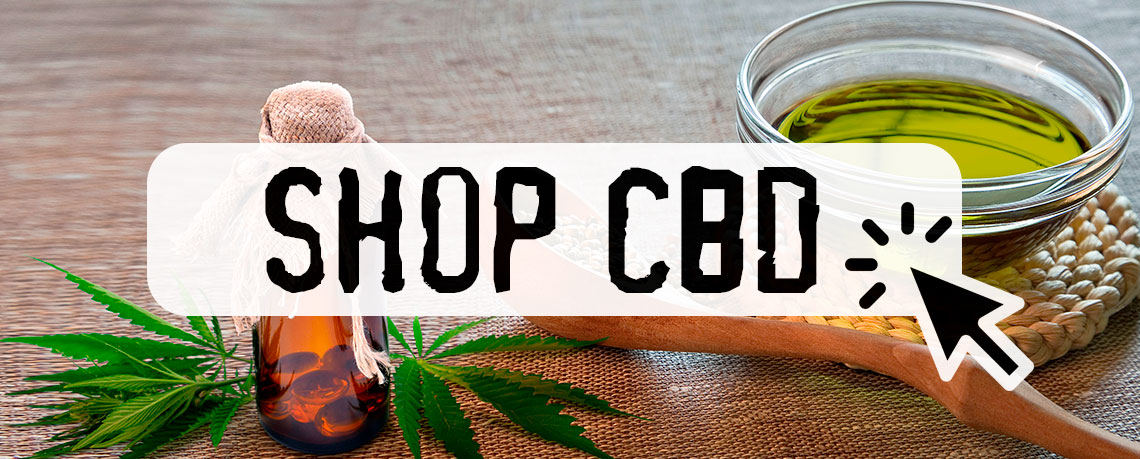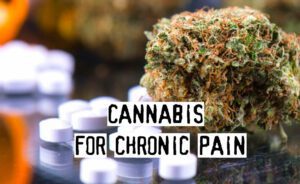What are the Major Differences Between THC and CBD?
To fully understand the therapeutic benefits of cannabis, you have to understand its two major cannabinoids. These are tetrahydrocannabinol or THC and cannabidiol or CBD.
Similar to the endogenous cannabinoids produced by our cells, they also interact with our body’s endocannabinoid system. Their activation of this important biological system enhances the ECS` function in promoting balance within the body.
Cannabis plants contain both THC and CBD. But these two cannabinoids have major differences that separate them.
A Quick Look at the Endocannabinoid System
Before we go to the differences between THC and CBD, let’s take a quick look at the endocannabinoid system (ECS) first.
The ECS is one of the most important biological systems in the body. It’s A key player in several physiological and cognitive functions. It regulates mood, appetite, pain, inflammation, and stress reaction. It also plays a role in motor and sensory functions, memory, learning, pleasure, and reward. The ECS basically functions to preserve and promote balance within the body, including hormones and neurotransmitters.
The ECS contains two well-studied cannabinoid receptors, the CB1 and CB2 receptors. Some studies suggest there may be a third one, but little is known about it for now. Although these receptors are found in all parts of the body, CB1 receptors are more abundant in the central and peripheral nervous systems. CBD receptors, on the other hand, are predominantly found in the immune system.
Stimulus, especially pain and illnesses, prompts our cells to release endocannabinoids. They bind to the cannabinoid receptors to activate the ECS. Its activation results in homeostasis. There`ll be pain and inflammation control, muscle relaxation, mood stabilization, among others.
Our cells produce and release endocannabinoids only on-demand and when they’re needed. As soon as they`re released, enzymes quickly break them down for reabsorption back into the cells. Because of this, the effects of the endocannabinoids don’t last long.
Chronic diseases cause ECS dysfunction, and ECS dysfunction worsens chronic diseases.
Now, this is where the cannabinoids from cannabis enter. They give our ECS the boost it needs and correct the endocannabinoid imbalance.
What is THC?
THC is the most abundant cannabinoid in cannabis. It’s also the major cannabinoid that makes cannabis highly psychoactive.
Similar to our endocannabinoids, THC also binds to both the cannabinoid receptors of the ECS, activating them to produce their therapeutic effects. However, its activation of the CB1 receptor also produces the “high` associated with cannabis.
THC is also responsible for the other side effects associated with cannabis use as well. These include cotton mouth and dry, red eyes.
What is CBD?
CBD is the second, most abundant cannabinoid found in cannabis. But unlike THC, CBD produces no psychoactive effects.
Studies showed that this non psychoactive cannabinoid has little binding affinity to the cannabinoid receptors. It doesn’t directly activate the cannabinoid receptors.
However, recent research though showed that CBD functions as a negative allosteric modulator of the CB1 receptor. They showed that CBD does bind to the CB1 receptor, just not on its active site. Instead, it binds to the CB1 receptor`s orthosteric site and changes the way the CB1 receptor transmit the signals produced by THC.
This CBD effect is actually very interesting. It explains how CBD counteracts THC`s psychoactive effects and reduces its potency.
What are the benefits of THC and CBD?
Both THC and CBD offer a lot of benefits.
- Decrease pain and control acute, chronic, and treatment-resistant pain.
- Reduce acute and chronic inflammation and even control autoimmune diseases.
- Control intractable epilepsy and treatment-resistant seizures.
- Exhibit anti-cancer effects.
- Protect brain cells from diseases like Alzheimer’s disease, Parkinson’s disease, multiple sclerosis, among others.
- Stabilize mental health problems like anxiety, depression, and post-traumatic stress disorder.
- Function as potent antioxidants that protect our cells from the damages of free radicals.
- Control nausea and vomiting. In fact, their antiemetic properties can be pretty potent that they can prevent chemotherapy-induced nausea and vomiting.
These are just some of the therapeutic benefits of THC and CBD.
Top Four Differences between THC and CBD
THC and CBD may have similar benefits. But they do have major differences as well. Below are some of the ways they differ:
- Psychoactive Effects
As mentioned earlier, THC produces psychoactive effects. It is the cannabinoid responsible for the high users experience when they use cannabis.
CBD is non psychoactive and doesn`t produce a “high.” In fact, it`s known to dampen this THC effect.
- Stress and Anxiety
Again, when THC activates the CB1 receptors, not only does it produce a high but it also induces anxiety and paranoia. This effect also triggers increased stress and agitation. In large doses, THC can even induce a panic attack. THC reduces a type of calming neurotransmitter called GABA. Low GABA levels result in increased excitatory neurotransmitters which then contribute to heightened fight or flight response.
CBD produces an opposite effect. It stabilizes mood by activating non-cannabinoid receptors responsible for regulating mood and emotions. Their activation then results in calming, soothing, and relaxing effects.
- Addiction
THC is not only psychoactive but it can be addictive as well. When you smoke cannabis, THC stimulates the reward and pleasure centers of the brain. Every time you smoke, it activates these centers and builds gratifying memories. The more you smoke, the more THC activates these brain centers.
Fascinatingly, CBD produces an opposite effect on the reward and pleasure centers of the brain. Instead of stimulating it, CBD actually dampens its response. What’s even more fascinating is that CBD actually reduces addiction to illicit substances, including marijuana itself. CBD also reduces symptoms associated with withdrawal from illicit drugs.
- Sleep
THC, when it binds to the CB1 receptors, promotes sleep. It reduces rapid eye movement activities during the REM stage of sleep. It also shortens the duration of REM sleep and allows individuals to sleep longer. The REM stage is the stage where dreams and nightmares occur. It is also the stage where your body prepares to wake up.
CBD energizes and promotes wakefulness. One study suggests that CBD activates the neurons found in the waking-related regions of the brain, the hypothalamus as well as the dorsal raphae nucleus. CBD`s stimulation of these areas promotes alertness and wakefulness.
THC and CBD may have a lot of differences. But it doesn’t mean that one is more superior than the other. In fact, these two can boost each other`s therapeutic benefits with CBD canceling out or at least reducing THC`s psychoactive effects.
List of High CBD Cannabis Strains
High CBD cannabis strains are perfect for those who want to use cannabis for medicinal purposes but want to avoid major psychoactive effects. Some of these high CBD cannabis strains include:
- Harlequin contains 4% to 10% CBD and 7% to 15% THC.
- Charlotte`s Web contains about 17% to 20% CBD with only about 1% THC.
- ACDC contains about 13% to 20% CBD with a low THC level of about 0.2% to 1%.
- Ringo’s Gift contains a high CBD level of about 14% to 22% and a low THC content of 0.85% to 1.2%
- Cannatonic contains 6% to 14% CBD and 6% to 10% THC.
- Harle-Tsu offers a whopping 22% to 38.78% CBD and a THC level of 5.25% to 10.40%.
- Sour Tsunami boasts of a CBD level of 7.5% to 11% and a THC level of 0.55% to 5.05%.
- CBD Critical Cure contains about 11% CBD and about 5% THC.
- Stephen Hawking Kush contains a CBD level of about 5% to 20% and a THC level of about 12%.
- Corazon boasts of a CBD level that can reach as high as 22.5% and low THC level of about 2.7%.
List of High THC Cannabis Strains
On the other hand, if you`re after some powerful psychoactive effects, you might want to try these high THC cannabis strains.
- Blissful Wizard packs a powerful punch with its 28% to 34% THC levels.
- Tutankhamun boasts of a whopping almost 30% THC levels.
- Super Glue is definitely a hitter with its 32.14% THC level.
- Gorilla Glue`s THC level ranges between 25% and 28%.
- All-time favorite Girl Scout Cookies contains a high THC level of about 28%.
- Strawberry Banana, a sweet name for a potent strain, boasts of a high THC level of about 31.62%.
- Ghost Train Haze contains a high level of THC at about 25.5%.
- Godfather OG, another crowd favorite, packs a whopping THC level of about 34.04%.
- ChemDawg typically has about 20% THC level, but some tests reveal this can go as high as 32.12%.
- Emperor Cookie is very potent with its 31.1% THC level.
Cannabis breeders are becoming more creative. With our society’s changing views on cannabis, we’re sure to see new, and maybe even more potent, cannabis strains in the market.
Final Notes
It’s important that you understand the differences between THC and CBD and how they interact with each other. It’s also just as important that you learn more about the different cannabis strains and their cannabinoid contents before trying them. This awareness helps you choose the best cannabis strains for your personal use, whether it’s for medicinal or recreational purposes. Feel free to check out cbd oil mail order option!




